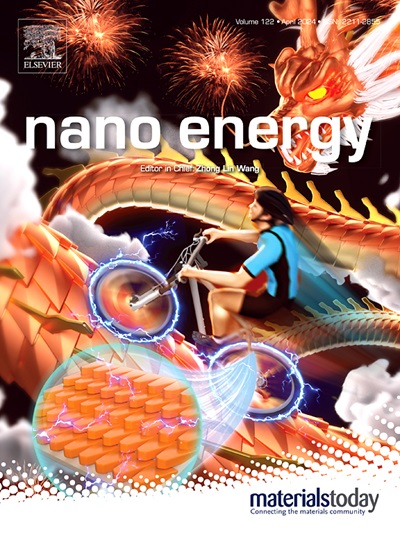Advancing perovskite light-emitting diodes: Multifunctional role of polymer, organic, and inorganic ligands in stability and efficiency enhancement
IF 16.8
1区 材料科学
Q1 CHEMISTRY, PHYSICAL
引用次数: 0
Abstract
Metal halide perovskites have revolutionized semiconductor optoelectronics and are emerging as exceptional candidates for high-performance perovskite light-emitting diodes (PeLEDs) owing to their outstanding properties including high color purity, narrow emission width (15–20 nm), tunable photoluminescence, and cost-effective solution processability. Despite these advantages, the widespread adoption of PeLEDs remains hindered by critical challenges, particularly their limited operational stability. In this review, we provide a comprehensive analysis of the recent advancements in stabilizing perovskite LEDs, focusing on the role of polymeric additives and inorganic and organic ligands in enhancing their operational half-lifetime (T50). These strategies have been demonstrated to influence the device performance, including the suppression of ion migration, reduction of interfacial hydrophilicity, minimization of nonradiative exciton recombination, and balancing of carrier injection, thereby facilitating improved carrier dynamics and enhancing both efficiency and stability. This review highlights the critical roles of polymeric additives, as well as inorganic and organic ligands, in addressing the key limitations of perovskite emitters and offers new perspectives for their integration into commercially viable optoelectronic applications.

改进钙钛矿发光二极管:聚合物、有机和无机配体在稳定性和效率提高中的多功能作用
金属卤化物钙钛矿已经彻底改变了半导体光电子学,并且由于其出色的性能,包括高色纯度,窄发射宽度(15-20 nm),可调谐的光致发光,以及具有成本效益的溶液可加工性,正在成为高性能钙钛矿发光二极管(PeLEDs)的特殊候选者。尽管有这些优势,但pped的广泛采用仍然受到关键挑战的阻碍,特别是其有限的操作稳定性。在这篇综述中,我们全面分析了稳定钙钛矿led的最新进展,重点是聚合物添加剂和无机和有机配体在提高其工作半衰期(T50)中的作用。这些策略已被证明可以影响器件性能,包括抑制离子迁移、降低界面亲水性、最小化非辐射激子重组和平衡载流子注入,从而促进改善载流子动力学并提高效率和稳定性。这篇综述强调了聚合物添加剂以及无机和有机配体在解决钙钛矿发射体的关键局限性方面的关键作用,并为其集成到商业上可行的光电应用中提供了新的视角。
本文章由计算机程序翻译,如有差异,请以英文原文为准。
求助全文
约1分钟内获得全文
求助全文
来源期刊

Nano Energy
CHEMISTRY, PHYSICAL-NANOSCIENCE & NANOTECHNOLOGY
CiteScore
30.30
自引率
7.40%
发文量
1207
审稿时长
23 days
期刊介绍:
Nano Energy is a multidisciplinary, rapid-publication forum of original peer-reviewed contributions on the science and engineering of nanomaterials and nanodevices used in all forms of energy harvesting, conversion, storage, utilization and policy. Through its mixture of articles, reviews, communications, research news, and information on key developments, Nano Energy provides a comprehensive coverage of this exciting and dynamic field which joins nanoscience and nanotechnology with energy science. The journal is relevant to all those who are interested in nanomaterials solutions to the energy problem.
Nano Energy publishes original experimental and theoretical research on all aspects of energy-related research which utilizes nanomaterials and nanotechnology. Manuscripts of four types are considered: review articles which inform readers of the latest research and advances in energy science; rapid communications which feature exciting research breakthroughs in the field; full-length articles which report comprehensive research developments; and news and opinions which comment on topical issues or express views on the developments in related fields.
 求助内容:
求助内容: 应助结果提醒方式:
应助结果提醒方式:


